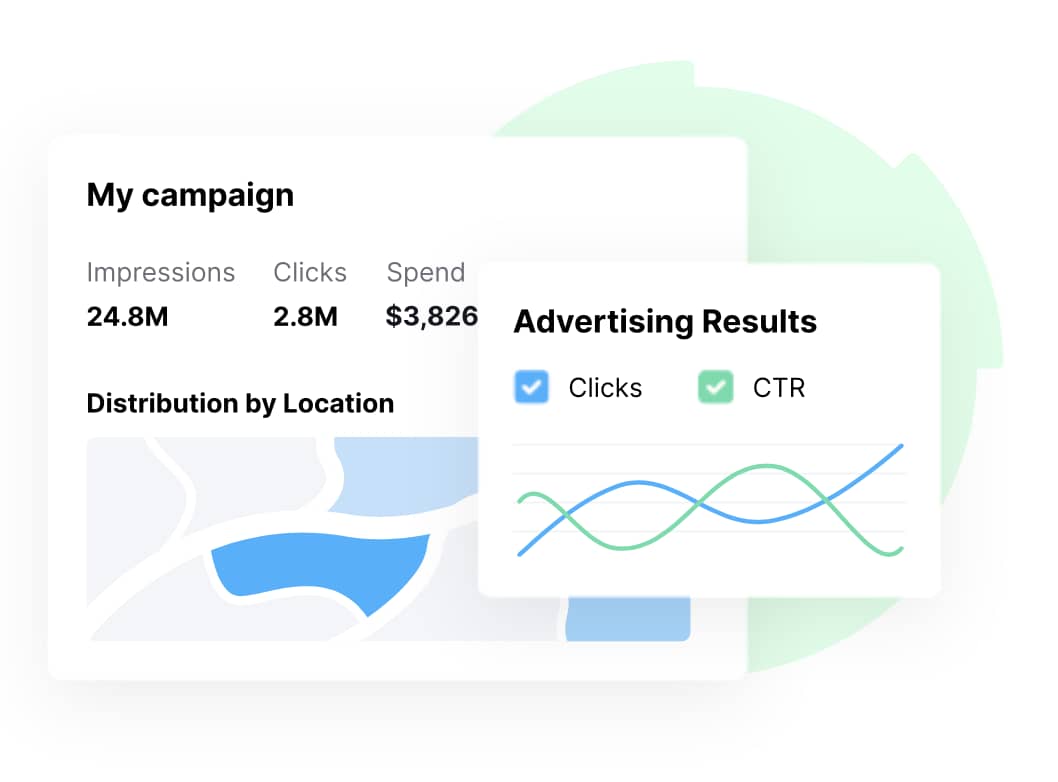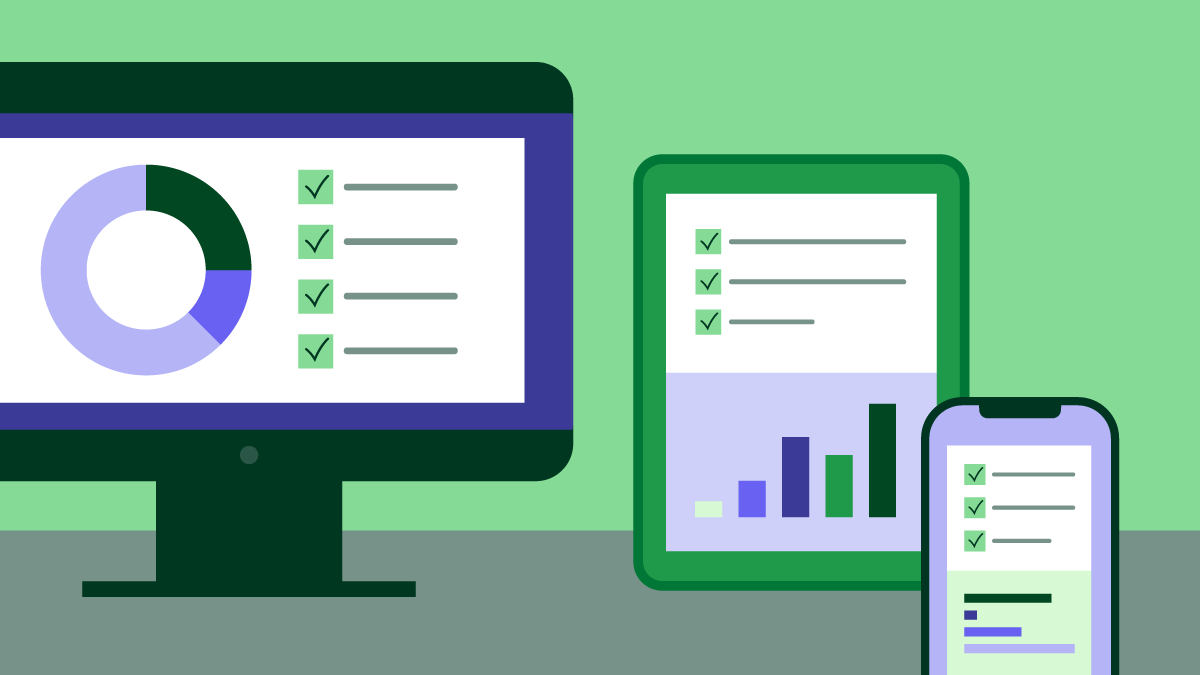Advertising management software (AMS) helps businesses manage paid ad campaigns across platforms from a single location.
With dozens of vendors promising automation, the right advertising management software must deliver measurable outcomes such as faster campaign deployment, streamlined media budget allocation or real-time performance analytics.
In this article, you’ll learn the key benefits of AMS and how to determine if it’s the right fit for your business. You’ll also learn about the top AMS platforms and the features to look for to help you make an informed decision on which solution to use (if any).
What is advertising management software?
AMS brings all your ad activity into one place, from social media to search and display ads. The software helps you plan, run, track and improve paid campaigns (also called pay-per-click or PPC ads) from a single platform.
By centralizing these activities, businesses can improve efficiency, optimize budget spending and adjust strategies to get the best results.
For example, instead of separately monitoring Facebook Ads, Google Ads and LinkedIn campaigns, a marketing team can use a single dashboard to identify which channel delivers the highest return on ad spend (ROAS).
The team can then quickly shift budget from underperforming platforms to those generating more conversions, reducing waste and improving overall campaign performance.
Note: AMS often overlaps with advertising agency management software. AAMS streamlines operations (like project management, client communication and campaign tracking). Agencies use this software to manage ad accounts for different clients.
How advertising management software works
Ad management software consolidates the tools and data needed to plan, manage and monitor paid ad campaigns.
Here’s how the software usually works (although specifics vary depending on the platform):
Campaign creation | Users can design ads, upload creative assets (like images, videos and copy) and choose the most effective ad formats (such as carousel, video or display) for their campaigns. You can also set campaign objectives, allocate budgets and define your ideal audience. For example, you can target people based on customer demographics, interests or behaviors. |
Ad placement | The software uses customer data and campaign goals to automatically place digital ads across multiple platforms. Say that your audience uses Facebook and LinkedIn. The software places ads on these platforms to target audiences where they’re most active. |
Tracking and analytics | AMS integrates tracking pixels, UTM parameters and platform-specific analytics to collect data on ads’ performance. The software monitors success metrics in one unified dashboard, including:
|
Optimization | The software adjusts ad targeting, messaging and budget to improve the user experience and boost results. Adjustments include changing bids, optimizing retargeting ads or pausing underperforming ads. |
Reporting | AMS platforms generate reports with visual dashboards that break down campaign performance. AMS reports highlight top-performing ads, identify trends and provide actionable insights. This information helps users make data-driven decisions and improve ROAS. |
Advertisement management software can streamline the entire ad lifecycle, from creation to reporting. The software helps businesses run more efficient, data-driven campaigns across channels.
Note: Marketing management software (MMS) is often used interchangeably with AMS, but it’s not the same. Marketing software covers a broader range of activities, including content and email marketing, SEO and social media management. AMS focuses on planning, running, tracking and optimizing paid campaigns.
5 top advertising management software solutions for SMBs
Manual ad management can be time-consuming, draining resources and leading to inconsistent results. A good AMS platform streamlines campaign creation, automates performance tracking and centralizes data – saving time while improving return on investment (ROI).
Here’s a roundup of five top solutions for SMBs:
1. Pipedrive
Pipedrive is a user-friendly CRM platform that helps SMBs manage sales pipelines, track leads and strengthen customer relationships. When connected with ad platforms, it can boost ad campaign performance and ROAS by linking marketing efforts to sales results.

For example, users can sync leads from ad platforms like Google Ads and Facebook Ads directly into Pipedrive. This integration allows sales teams to track and nurture leads without wasting time on manual data entry.

Here are some of the other ways you can use Pipedrive to boost your advertising strategy:
Optimize ad campaigns
Pipedrive helps SMBs create targeted ad campaigns using customer insights from its CRM. By segmenting audiences based on demographics, deal stages, purchase history and engagement patterns, businesses can serve more relevant ads that boost conversions and ROI.
For instance, you can identify a segment of repeat buyers who previously purchased high-margin products, then deliver ads promoting exclusive bundles or loyalty discounts tailored to them.
Automate follow-ups
Pipedrive’s workflow automation triggers follow-ups and tasks when leads interact with ads. As a result, sales teams can provide timely and personalized engagement with potential customers, increasing the chances of conversion.
For instance, when a prospect fills out a lead form from a Facebook ad, Pipedrive can instantly assign that lead to a sales rep and schedule a follow-up call. Your team responds quickly, and no potential leads fall through the cracks.
Track ad performance
Pipedrive integrates with analytics tools (like Google Analytics), helping you track ad spend, impressions, clicks and conversions alongside your sales data. This combined view lets you see which marketing campaigns generate the most valuable leads, not just the most clicks.
For example, if a Google Ads campaign drives a high volume of leads but a Facebook Ads campaign delivers more closed deals, you can shift the budget toward Facebook to maximize ROI.
Align sales and marketing
Pipedrive streamlines collaboration between sales and marketing teams by giving you a clear view of ad performance. Both departments know which ad campaigns drive the best leads and which channels drive the highest conversions.
Here’s how the sales and marketing teams can view key performance insights in a Pipedrive dashboard:

The marketing team can use this data to refine messaging, while the sales team prioritizes outreach to leads from top-performing campaigns.
2. Skai
Skai (formerly Kenshoo) is an omnichannel marketing platform that helps businesses automate and optimize cross-channel campaigns. The software uses AI-driven insights and cross-channel reporting to allow users to maximize ROAS on multiple platforms.

Here are some of Skai’s key features:
AI-powered bid and budget management. Skai uses machine learning to adjust bids and allocate budgets across channels.
Advanced audience targeting. The platform lets businesses build precise audience segments, allowing for highly personalized campaigns.
Comprehensive reporting and insights. Skai delivers detailed cross-channel reports with actionable insights, helping teams identify top-performing ads, spot trends and fine-tune campaigns.
Skai’s attribution modeling also tracks how different channels work together. For example, it can show how a customer who clicked a Facebook ad later converted after a Google search.
3. Sprout Social
Sprout Social is a social media ad management platform. The software simplifies the creation and management of ads across social media platforms like Facebook, Instagram, X (formerly Twitter) and LinkedIn.

Here are some of Sprout Social’s core ad management features:
Centralized ad campaign management. Sprout Social lets SMBs manage ads across social platforms from a single dashboard, ensuring consistent messaging and performance tracking across channels.
Advanced analytics and reporting. The platform offers in-depth analytics for ad campaigns, providing insight into engagement, impressions, click-through rates and conversions.
Social listening and audience insights. Users can monitor conversations around their brand or industry to discover trending topics or customer pain points.
Sprout Social’s reports can also track ROI, helping businesses quickly identify underperforming ads and optimize campaigns in real time.
4. Semrush
Semrush is an all-in-one marketing platform that offers advertising management solutions, including paid search and display ads. The software helps SMBs research keywords, create targeted ads and analyze competitors to strengthen digital marketing strategies.

Here are some of Semrush’s main digital advertising management features:
Keyword research tools. Semrush allows businesses to identify high-performing keywords for paid search campaigns by providing data on search volume, keyword difficulty and cost-per-click (CPC).
Competitor ad analysis. The platform offers insights into competitors’ ad strategies, including their target keywords, ad copy and estimated traffic.
Ad tracking. Semrush tracks the performance of paid search and display ads, offering metrics such as impressions, clicks, conversions and costs.
These features support more informed decision-making and help SMBs manage advertising efforts in a data-driven, efficient way.
Note: Keywords determine when and where ads appear in search results. By using relevant keywords in ads, businesses ensure ads reach the right audience and avoid wasting budget on irrelevant traffic.
5. WordStream
WordStream is a digital marketing platform that helps businesses manage paid ad campaigns on sites like Google and Facebook. It offers tools for campaign optimization, performance tracking and budget management to improve advertising results.

Here are some of its advertising-related features:
Smart recommendations and alerts. The platform provides automated suggestions to improve campaigns (such as refining keywords, adjusting budgets or improving ad copy) based on real-time performance.
Cross-platform ad reporting. WordStream’s dashboard monitors key metrics like clicks, conversions, CPC and ROAS across multiple ad channels.
Automated bidding and budget tools. WordStream monitors key metrics (like clicks, conversions, CPC and ROAS) across multiple ad channels. Businesses can then directly compare performance across different platforms.
These features help businesses optimize ad performance, adjust budgets in real time and maximize the ROI across multiple platforms.
What SMBs can achieve when they implement AMS
Advertising platforms help SMBs streamline ad campaign creation, optimization and tracking. Businesses can improve ROI, save time and manage cross-channel efforts without needing extensive resources.
Here are some key advantages:
Improve efficiency
Ad management tools automate tasks like ad creation, scheduling and optimization, saving valuable time. By streamlining these processes, businesses can focus on high-priority activities – like closing more deals.
For example, automation tools can adjust bids, pause underperforming ads or create A/B tests for ad creatives without manual input. Automating these activities leads to smoother workflows and faster execution.
Crush your manual admin with this sales automation guide
Optimize budgets and ad spend
Advertising management software tracks budgets, monitors CPC and optimizes ad spend. These features give SMBs better control of budgets and spending, improving ROI and ensuring optimal ad performance.
For instance, they can set daily or campaign-specific limits, track expenses in real time and ensure ads don’t exceed budget constraints.
Automatically adjusting bids also helps businesses allocate budgets more effectively.
Imagine that an e-commerce business uses AMS software. The platform tracks ad performance across different channels and makes adjustments to improve it.
For example, the software might allocate more budget to a Facebook campaign that generates more conversions while reducing spending on underperforming Google Ads.
Enhance targeting and audience segmentation
Advertising management software allows SMBs to segment audiences based on specific criteria such as demographics, online behaviors and past interactions. As a result, ads reach the most relevant prospects, improving ad relevance and increasing conversion rates.
Think about a business trying to target users who have previously visited the company website but didn’t complete a purchase. With an AMS platform, the business can target these people, leading to more engaging ads that drive higher returns.
Make data-driven decisions
Real-time analytics and reporting provide SMBs with actionable insights into ad performance. Businesses can track key metrics like CTRs, conversions and ROAS, allowing them to make data-driven adjustments to improve results.
Say a campaign’s CPC is higher than expected. A business can use an AMS platform to identify the higher costs and create a solution to reduce CPC. Access to these real-time insights allows businesses to pivot quickly and enhance campaign performance.
Download Your Guide to Sales Performance Measurement
Manage campaigns across multiple platforms
Many advertising management platforms offer cross-platform functionality. This functionality allows businesses to manage ads from different channels from a single dashboard, making tracking performance and optimizing ads across platforms easier.
For example, a business could adjust ad copy and targeting strategies for Facebook and Instagram campaigns from the same platform. This centralized control lets them create consistent messaging across channels without manually adjusting copy in each platform.
Note: For optimal results, many successful agencies combine their advertising management systems with purpose-built project management software for advertising agencies to create a comprehensive technology stack that supports both client-facing and internal processes.
Is advertising management software right for your business?
Advertising management software can deliver major benefits, but it’s not the right fit for every SMB. These platforms’ complexity, pricing or technical demands may outweigh the value they provide – especially for businesses with simple ad needs or highly specific campaign goals.
Here are some of the challenges SMBs face when using AMS:
Targeting competitive niches | For businesses operating in highly competitive niches (like bespoke services or legal firms), the software may struggle to keep up with the customization and local targeting needed to stay competitive. These platforms often rely on broad automation rules and may not understand the nuanced search intent that can impact ad sales in these industries. Without manual control over keyword selection, bidding strategies and messaging, campaigns can underperform or miss key opportunities. |
Creating and managing simple ad campaigns | If your business only runs a handful of simple ad campaigns, an AMS platform could introduce unnecessary costs and complexity. Using native tools within platforms like Google Ads or Facebook Ads may be enough. |
In these cases, manual ad management might be the better option.
If you decide to manage ads manually but still want to view ad performance in a single location, you can set up a Google Looker dashboard. These customizable dashboards can track live performance metrics across channels.
Here’s an example of a Google Looker dashboard:

However, dashboard creation requires technical skills like connecting APIs or writing SQL queries.
If you don’t have these technical skills, consider hiring an ad specialist or freelancer to handle setup and management.
Though potentially more expensive up front, hiring an expert often leads to better results, particularly in competitive industries where personalized strategy matters.
SProfessionals know how to use the software effectively, tailoring campaigns that off-the-shelf automation can’t match.
Get organized with your free sales pipeline excel template
If your main goal is to connect ad performance with sales performance (without investing in a full AMS), Pipedrive’s CRM system offers a practical alternative.
By integrating Pipedrive with platforms like Google Ads or Facebook Ads, you can automatically sync leads into your CRM, track where they came from and monitor how they move through the sales pipeline.
These insights give your team visibility into which ads generate high-quality leads, helping you prioritize follow-ups and increase sales.
Final thoughts
Advertising management software can be valuable for a small business, streamlining ad creation, optimization and performance tracking.
However, the complexity and costs may outweigh the potential benefits for some businesses (especially those with simpler needs or a niche focus).
If your business doesn’t need a full AMS platform but wants to link ad campaigns to real sales results, Pipedrive provides a smart middle ground. The CRM integrates with ad platforms and offers built-in sales tracking, helping you connect marketing efforts to revenue.
Sign up for a free trial to see how Pipedrive simplifies lead management and ad optimization.







